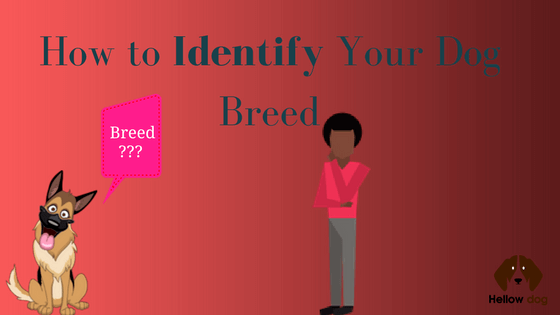Pomskies, a crossbreed between a Pomeranian and a Siberian Husky, have captured the hearts of dog lovers with their adorable looks and spirited personalities. One of the most common questions potential Pomsky owners ask is, “How big do Pomskies get?” In this article, we’ll explore the size variations of Pomskies, factors that influence their growth, and what you can expect as your furry friend matures.
Understanding Pomsky Size Variations
Pomskies can vary significantly in size due to their mixed-breed heritage. On average, a full-grown Pomsky typically weighs between 20 to 30 pounds and stands around 10 to 15 inches tall at the shoulder. However, some Pomskies may be smaller or larger depending on the genetic influence of their Pomeranian and Siberian Husky parents.
Factors Influencing Pomsky Size
Several factors can influence the size of a Pomsky, including genetics, diet, and overall health. Here are some key considerations:
Genetics: The size of a Pomsky largely depends on the size of its parent breeds. Pomeranians are small, usually weighing between 3 to 7 pounds, while Siberian Huskies are much larger, typically weighing 35 to 60 pounds. The genetic mix of these two breeds determines the size of the Pomsky.
Diet and Nutrition: Proper nutrition plays a crucial role in Pomsky’s growth. A balanced diet that meets their nutritional needs ensures healthy development. Overfeeding or underfeeding can impact their size and overall health.
Exercise: Regular exercise is important for maintaining a healthy weight and muscle development. Pomskies are active dogs and need sufficient physical activity to stay fit.
Health: Health conditions and overall well-being can affect Pomsky’s growth. Regular veterinary check-ups and preventative care are essential for monitoring their development.
Growth Stages of a Pomsky
Pomskies go through several growth stages, each with its characteristics. Understanding these stages can help you anticipate your Pomsky’s size and care needs.
Puppy Stage (0-6 months): During the first six months, Pomskies experience rapid growth. They will gain weight and height quickly, reaching a significant portion of their adult size.
Adolescent Stage (6-12 months): Growth slows down but continues during the adolescent stage. Pomskies will fill out and develop muscle tone. This stage is crucial for establishing good habits and training.
Adult Stage (12+ months): By the age of one year, most Pomskies reach their full adult size. However, some may continue to fill out slightly until they are 18 months old.
Common Questions About Pomsky Size
How big do Pomskies get compared to other breeds?
Pomskies are smaller than their Siberian Husky parent but larger than their Pomeranian parent. They are considered a small to medium-sized breed, making them a good fit for various living situations, including apartments and houses with yards.
Can I predict my Pomsky’s adult size?
Predicting Pomsky’s adult size can be challenging due to the variability in genetics. However, looking at the sizes of the parent dogs can provide some indication. Breeders may also offer size estimates based on their experience with the breed.
Do male and female Pomskies differ in size?
Generally, male Pomskies tend to be slightly larger than females. However, the difference is usually not significant, and both genders fall within the same overall size range.
What should I feed my Pomsky to ensure proper growth?
A high-quality, balanced diet tailored to small to medium-sized breeds is ideal for Pomskies. Consult with your veterinarian to determine the best food for your Pomsky’s specific needs, considering factors such as age, weight, and activity level.
Tips for Managing Your Poms ky’s Size and Health
Maintaining your Pomsky’s health is essential for ensuring they reach their optimal size and live a happy, active life. Here are some tips for managing their size and overall well-being:
Regular Exercise: Ensure your Pomsky gets plenty of physical activity. Daily walks, playtime, and interactive toys help keep them fit and prevent obesity.
Balanced Diet: Feed your Pomsky a balanced diet that meets their nutritional requirements. Avoid overfeeding and provide portion-controlled meals.
Veterinary Care: Regular vet check-ups are crucial for monitoring your Pomsky’s growth and health. Vaccinations, dental care, and preventative treatments should be kept up to date.
Training and Socialization: Proper training and socialization from a young age contribute to your Pomsky’s overall well-being. Positive reinforcement techniques work well with this intelligent and eager-to-please breed.
Grooming: Regular grooming is important for maintaining your Pomsky’s coat and skin health. Brush their fur frequently to prevent mats and tangles, and bathe them as needed.
Conclusion
Pomskies are a delightful hybrid breed that offers the best of both the Pomeranian and Siberian Husky worlds. While their size can vary, understanding the factors that influence their growth and following proper care guidelines can help you raise a healthy and happy Pomsky. Whether you’re considering adding a Pomsky to your family or already have one, knowing what to expect in terms of size and development will enhance your experience with this charming and energetic companion.
FAQs
How big do Pomskies get? Pomskies typically weigh between 20 to 30 pounds and stand around 10 to 15 inches tall.
Are Pomskies good for apartments? Yes, their small to medium size makes them suitable for apartment living as long as they get enough exercise.
How can I ensure my Pomsky grows healthily? Provide a balanced diet, regular exercise, and routine veterinary care to support healthy growth.
Do Pomskies shed a lot? Pomskies can shed moderately. Regular grooming helps manage shedding and keeps their coat healthy.
What is the lifespan of a Pomsky? Pomskies generally live between 12 to 15 years with proper care.







